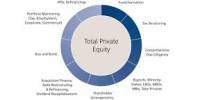A liquidity crisis occurs when there is a shortage of liquidity in financial markets or in a specific financial institution, causing it to be unable to meet its financial obligations. Liquidity refers to the ability of an asset to be converted into cash quickly without causing significant price changes.
In a liquidity crisis, investors and creditors become hesitant to lend or invest money, causing a shortage of funds. This, in turn, can lead to a cascading effect as borrowers are unable to obtain funding, which can lead to defaults and bankruptcies. The crisis can affect the entire financial system, leading to a credit crunch and economic downturn.
Explanation
A liquidity crisis is a severe lack of liquidity in financial economics. Market liquidity (the ease with which an asset can be converted into a liquid medium, such as cash), funding liquidity (the ease with which borrowers can obtain external funding), or accounting liquidity (the health of an institution’s balance sheet measured in terms of cash-like assets) are all examples of liquidity. Furthermore, some economists define a market as liquid if it can absorb “liquidity trades” without significant price changes. This liquidity shortage could be due to a drop in asset prices below their long-run fundamental price, deterioration in external financing conditions, a reduction in the number of market participants, or simply difficulty trading assets.
During a liquidity crisis, the aforementioned forces mutually reinforce one another. Market participants in need of cash have a difficult time finding potential trading partners to sell their assets to. This could be due to low market participation or a decrease in cash held by financial market participants. As a result, asset owners may be forced to sell their assets at a price lower than the long-term fundamental price. Borrowers typically face higher loan rates and collateral requirements than during times of abundant liquidity, and unsecured debt is nearly impossible to obtain. During a liquidity crisis, the interbank lending market typically does not function smoothly.
Example
One example of a liquidity crisis occurred during the 2008 financial crisis, when the collapse of the housing market led to a severe shortage of liquidity in the banking system. Banks and other financial institutions had invested heavily in mortgage-backed securities that were now worth much less than their original value, causing a significant decline in their asset base. As a result, banks became reluctant to lend money to other institutions, leading to a freeze in the credit markets and a severe liquidity crisis.
To mitigate the effects of a liquidity crisis, central banks and governments may intervene by providing liquidity support to financial institutions or by implementing policies to encourage lending and investment. Additionally, financial institutions may take steps to reduce their reliance on short-term funding sources and increase their reserves of liquid assets.
Several mechanisms, which operate through the mutual reinforcement of asset market liquidity and funding liquidity, can amplify the effects of a minor negative shock to the economy, resulting in a lack of liquidity and, eventually, a full-fledged financial crisis.
















